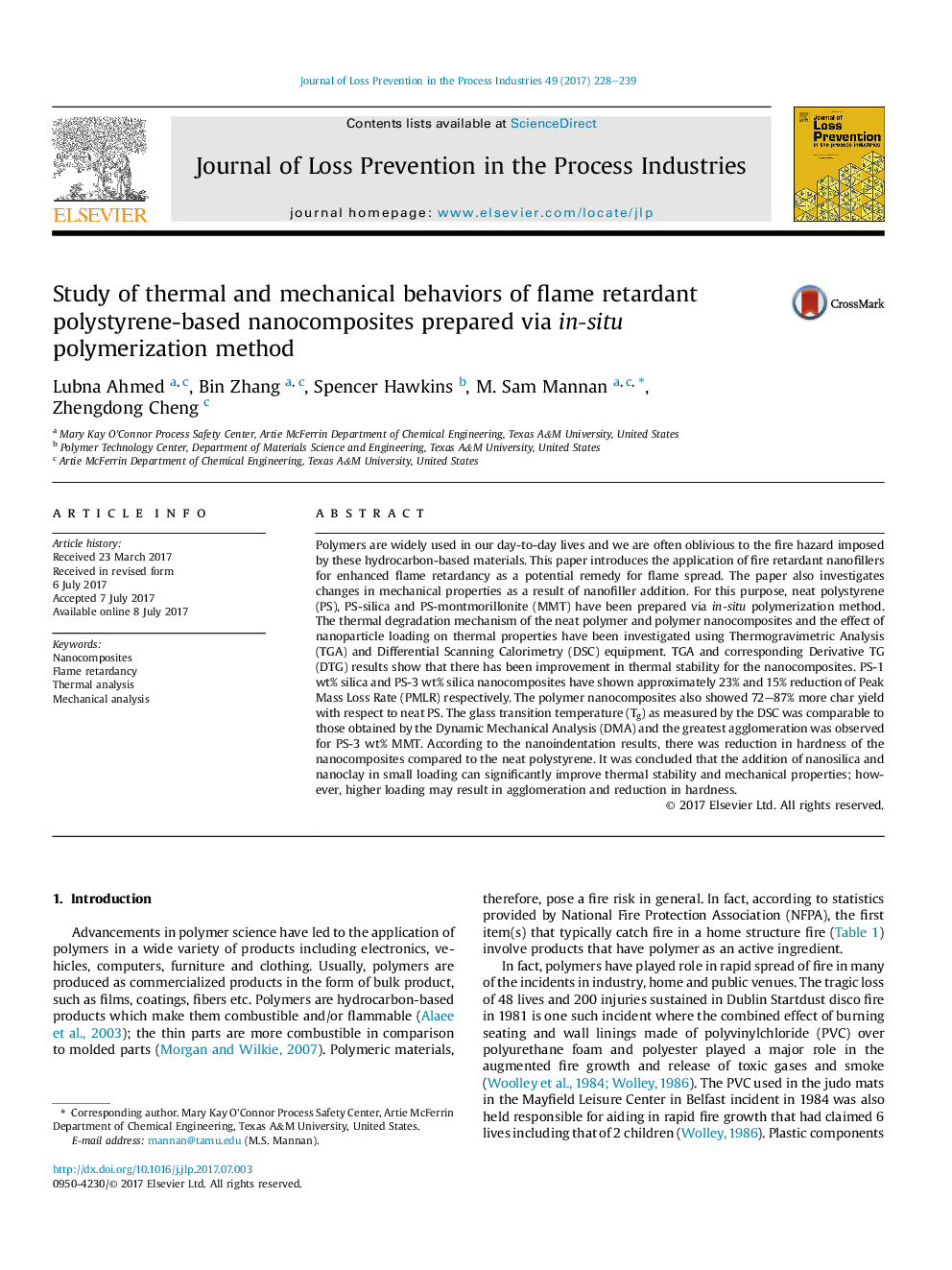| Article ID | Journal | Published Year | Pages | File Type |
|---|---|---|---|---|
| 4980308 | Journal of Loss Prevention in the Process Industries | 2017 | 12 Pages |
Abstract
Polymers are widely used in our day-to-day lives and we are often oblivious to the fire hazard imposed by these hydrocarbon-based materials. This paper introduces the application of fire retardant nanofillers for enhanced flame retardancy as a potential remedy for flame spread. The paper also investigates changes in mechanical properties as a result of nanofiller addition. For this purpose, neat polystyrene (PS), PS-silica and PS-montmorillonite (MMT) have been prepared via in-situ polymerization method. The thermal degradation mechanism of the neat polymer and polymer nanocomposites and the effect of nanoparticle loading on thermal properties have been investigated using Thermogravimetric Analysis (TGA) and Differential Scanning Calorimetry (DSC) equipment. TGA and corresponding Derivative TG (DTG) results show that there has been improvement in thermal stability for the nanocomposites. PS-1 wt% silica and PS-3 wt% silica nanocomposites have shown approximately 23% and 15% reduction of Peak Mass Loss Rate (PMLR) respectively. The polymer nanocomposites also showed 72-87% more char yield with respect to neat PS. The glass transition temperature (Tg) as measured by the DSC was comparable to those obtained by the Dynamic Mechanical Analysis (DMA) and the greatest agglomeration was observed for PS-3 wt% MMT. According to the nanoindentation results, there was reduction in hardness of the nanocomposites compared to the neat polystyrene. It was concluded that the addition of nanosilica and nanoclay in small loading can significantly improve thermal stability and mechanical properties; however, higher loading may result in agglomeration and reduction in hardness.
Related Topics
Physical Sciences and Engineering
Chemical Engineering
Chemical Health and Safety
Authors
Lubna Ahmed, Bin Zhang, Spencer Hawkins, M. Sam Mannan, Zhengdong Cheng,
